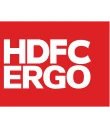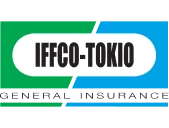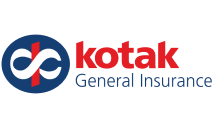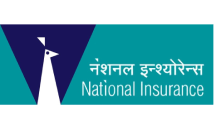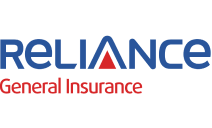Car insurance claims
A car insurance policy is a mandatory requirement as prescribed by the Motor Vehicles Act, 1988. That is why every car driving on Indian roads carries a valid insurance cover. This cover comes in handy in times of any contingency involving the car. In case of accidents or facing car related damages, a claim arises in the car insurance policy. There are three instances of car insurance claims which are as follows:
- Accidents
The most common instance of claim is when the car is involved in an accident. In an accident, three types of claims might arise.- Third party claims – when your car injures or kills any third person or damages any third party property
- Own damage claims – when only your car faces damage. For instance, you ram your car in a tree or a light-post
- Both third party and own damage claim – when you injure any third party or damage any third party property and your car also faces damages.
- Theft of the car
When the car is stolen, a theft claim arises.
What is Claim Settlement Ratio & Why is it important for you?
Claim settlement ratio is an important factor to consider when choosing an insurance company. Better known as CSR, the claim settlement ratio is actually the percentage of claims that are settled by an insurance company out of the total number of claims, including the pending ones, in a given year. Often taken as an indicator of credibility, the higher the CSR of a company, the more popular it is considered to be. In simple words, the ratio shows how many claims are settled out of every 100 claims that have been raised. For example in a year, if an insurance company settles 95 claims out of the 100 claims that were raised, its Claim Settlement Ratio for that year would be 95%.
Types of Claim Settlement
When you have to make a car insurance claim, there are two ways of doing it. These days most insurance companies offer cashless repairs at their selected garages. These garages, known as network garages do the repair work and the bills are settled directly by the insurance company. Only the uncovered expenses are to be paid by the policyholder.
When making any type of claim, make sure you inform the insurance company as early as possible. Inform them about the accident/ damage and only then take your car for repair.
- Cashless Claim
If you’ve got your car fixed at a network garage which is permitted by the insurer, you can opt for a cashless claim settlement. Once your vehicle is ready the workshop mails the bills to the insurance company. The insurance company releases its liability and you have to just pay the difference amount and take the delivery of your vehicle (Difference Amount = Total Bill Amount – Insurance Co Liability Share). So basically, in a cashless claim. You need to pay only for the part that is not covered by the insurance. It is worth noting that the amount you pay also depends on the voluntary deductible opted by you if any. - Reimbursement Claim
If you get your car fixed at a workshop/ garage, not in the network of the insurer, you need to claim reimbursement car settlement. Once your vehicle repair work is completed you have to pay the complete bill amount from your pocket, take the delivery of your vehicle and submit the original bills to the surveyor. On receiving the bill the insurance company will reimburse the approved amount via NEFT to the insured’s account in 8 to 10 working days. The insurer reimburses the claimed amount after factoring in the payables. It holds for the voluntary and compulsory deductibles (if any).
Documents Required for Car Insurance Claim Settlement
The following documents would be required at the time of claim settlement of your car insurance:
- Signed and filled claim form
- Insurance policy document
- Registration certificate of your car (RC)
- Bank details and a cancelled cheque in case of Reimbursement
- Driving Licence
- Pollution control certificate (PUC)
- Bills of repairs and original receipt in case of a reimbursement claim
- First Information Report (FIR) in case there is a third party liability or in case of fatal injuries
- If the claim amount is more than one lakh, a copy of the pan card will be needed
- Signed Discharge voucher
How to make a claim in these instances?
Whether your car is involved in an accident or it is stolen, you are required to follow a proper procedure to make a car insurance claim. Here are the steps to be followed in each of the above-mentioned instances of claims.
- In case of accidents
- Inform the insurance company immediately on its toll free number mentioned on your Policy Copy when you face an accident & intimate the claim. Mention the policy number and the details of the accident to the call centre of the respective insurance company.
- Once the claim is intimated, you have to move your vehicle to Insurance company’s nearest network garage for cashless claim settlement. Network garage details will be provided by the call centre team & if you have to go for reimbursement claim you can move your vehicle to any nearby workshop as per your convenience.
- Police FIR is Mandatory if there is any Third party Injury involved in the accident, or if the accident is major. Even in case of Good Carrying Vehicle, police FIR is mandatory.
- A surveyor will visit the garage and assess the loss and will give necessary approval to start the repair work.
- You have to fill the claim form and submit it in the workshop along with Policy Copy, RC Driving Licence of the driver who was driving the vehicle at the time of accident and all copy of all other vehicle documents in case of Passenger Carrying Vehicle & Goods Carrying Vehicle.
- Any third party claim, if applicable, is settled by the insurance company based on the rulings of the motor accidents tribunal.
- When the repairs are completed, the insurance company settles the bills with the workshop. You might have to pay a part of the claim from your own pockets. Once all the costs are settled, you can take delivery of your car.
- In case of theft of car
- Inform the insurance company of the theft immediately.
- A FIR should also be filed immediately in case of theft
- A claim is then to be filed with the insurance company. You have to submit the RC book, copy of the FIR, copy of the driving license, copy of the intimation sent to the RTO and the policy document
- Once the police issues a ‘non-traceable’ report for the car after three months of loss of the car, the claim would be settled by the insurance company
- You would have to transfer the RC book of the car in the name of the insurance company along with a letter of subrogation transferring all rights of your car to the insurance company.
- Once these formalities are done, the IDV of the car is paid as claim.
Reimbursement Car Insurance Claim Settlement Process
The steps needed to be followed for a reimbursement car insurance claim settlement process are :
- Claim Intimation
Inform the insurance provider about the accident of the insured car immediately. You can contact Turtlemint by simply filling up a form or you can call us at 1800-266-0101 or email us at support@turtlemint.com to register your claim. You will be provided with a claim reference number by the insurer after the completion of claim registration. - Survey and inspection
After the intimation of the claim, the insurer will assign a surveyor to you to inspect the amount of damage and loss sustained by your car in the accident. The surveyor will then provide a report to the car insurance company. You as a policyholder must submit all the required documents and provide all the necessary details to the surveyor to help the process of claim settlement. - Towing and Repairs
After the inspection of your car is complete, you can take your car to a garage. In case the car is not in a drivable situation, you can get it towed to your preferred garage for repairs. Free towing facilities are provided by most of the insurance providers; however, you must check from the same from your particular insurer. - Final Reimbursement
SInce your car is being repaired at a garage of your preferred choice outside the authorised network of the insurer, therefore you will have to pay the entire repair cost to the garage from your pocket and then initiate a process of reimbursement of the paid amount. You will be reimbursed for the repair cost after the deduction of the applicable deductibles. The money will be transferred to the bank account that has been authorized by you.
Cashless Car Insurance Claim Settlement Process
The cashless car insurance claim settlement process is given below in the following steps however, the steps may vary for different insurance providers.
- Intimate Claim With Insurer
You need to inform the insurance provider about the accident of the insured car immediately. You can contact the insurance provider by contacting the insurer’s customer care team via call or email available on the official website or mobile application (if available) to register your claim. You will be provided with a claim reference number by the insurer after the completion of claim registration. - Assessment of Damage Sustained
After the completion of the claim, the insurer will assign a surveyor to you to inspect the amount of damage and loss sustained by your car in the accident. If your insurer facilitates it, you may be provided with a self-inspection link on the registered mobile number.
For the former case, the surveyor will send the damage report to the insurer whereas in the latter case the insurer will reach out to you with an estimated cost of repair as soon as possible. You must submit all the required documents to the surveyor to help the smooth processing of claim settlement. - Towing and Repair of Car
In case you cannot drive your car and need to get your car towed to an authorized garage by the insurer for repairs, you can ask the insurer to provide a towing service for your insured car. Free towing facilities can be availed of if your insurance company offers such a service. - Claim Settlement
The insurer will directly pay for the repairs to the garage according to the entitled amount claimed. You can take back your repaired car after paying the necessary deductibles.
Types of car insurance claims
Car insurance claims are of two types – cashless and reimbursement. Here’s what these claims are:
- Cashless claims
under cashless claims, you get the car repaired at the preferred workshop and once your vehicle is ready workshop mails the bills to the insurance company. The insurance company releases its liability and you have to just pay the difference amount and take the delivery of your vehicle (Difference Amount = Total Bill Amount – Insurance Co Liability Share). - Reimbursement claims
when the car is repaired at a non-networked garage, once your vehicle repair work is completed you have pay the complete bill amount and take the delivery of your vehicle and submit original bills to surveyor. On receiving the bill the insurance company will reimburse the approved amount via NEFT to the insured’s account in 8 to 10 working days.
Things to look out for when making a car insurance claim
There are things which should be kept in mind when making a car insurance claim. These things, if considered, help in getting the claim settled quickly. Here are the things which should be kept in mind at the time of claim:
- Excess
There is a component of compulsory excess in a car insurance policy. This excess represents the portion of claim payable by you. In every claim, you would have to compulsorily bear the excess.
Similarly, there is also a concept of voluntary excess. However, unlike compulsory excess which is mandatory, voluntary excess is chosen by you. If you choose voluntary excess, you would have to pay the chosen portion of claim. Voluntary excess, if chosen, earns you a premium discount. - Exclusions
Engine capacity determines the third party premium which is a component of premium calculation. Higher the engine capacity higher would be the car insurance premium. - Depreciation
If your car is being repaired, depreciation would be applicable on the parts being repaired. The insurance company would, thus, pay a portion of the actual bills after deducting the applicable depreciation (On Plastic Parts 50% on Metal Parts – As per Vehicle Age, & on Glass No Depreciation ) You would, then, have to bear the cost of depreciation and pay the unsettled claim yourself. - Preferred garage
Cashless claims are settled only if the car is repaired at a preferred garage. So, before taking your car for repairs, check the preferred garages in the area. You can also find the garage from the insurance company’s toll free number while registering the claim and take the car to the networked garage. - Loss of No Claim discount
When no claim is made in a policy year, the car insurance policy allows a premium discount in the next year’s premium. This discount increases every subsequent claim-free year. If, however, a claim is made, the discount becomes zero. So, avoid making small claims. Pay the repair costs of smaller claims from your own pockets to avoid losing the accumulated no claim discount. - Documents required
Every claim requires a valid set of documents which should be submitted along with the claim form. Some common documents include copies of the diving license, RC book, policy bond and FIR, if applicable. So, when making a claim, make sure that the relevant documents are handy. - Using add-ons
Add-ons are additional coverage features which enhance the scope of coverage of the car insurance plan. If you have selected add-ons in the policy, see if the add-on proves useful at the time of claim. For instance, if you have a roadside assistance add-on and your car is stranded in the middle of the road, you can call the insurance company and use the add-on for arranging assistance. Similarly, in case of a zero depreciation add-on, the insurance company would pay the full claim, without deducting depreciation. So, see if the selected add-ons are being used in case of your claim. - Add-ons selected
A comprehensive car insurance policy allows optional add-ons which help in increasing the scope of coverage. Each add-on, however, requires the payment of an additional premium. Thus, if an add-on is selected in the policy, the premium increases.
How to file for Third-Party Claim Settlement?.
The following are the steps to file for a third party insurance claim:
- Step 1
Inform the insurance provider about the situation as soon as possible by contacting the insurance providers helpline or any other online method. Let them know within the stipulated time as delays may result in claim rejection. - Step 2
File a First Information Report (FIR) to the nearest police station, a copy of the FIR document will be needed at the time of the claim. - Step 3
Submit all the documents required along with the duly filled insurance claim form. The documents may vary for different insurance providers. Make sure to clarify the required documents from your insurance provider while contacting them. - Step 4
After the submission of the required documents to the insurance provider, all the third-party settlements are done in the Motor Accident Claims Tribunal. The third-party must file a case in the tribunal which will decide the claim amount. - Step 5
If there is a case where you need to provide compensation to a third party, the insurer will take care of it.
How many Car Insurance Claims can you make in a Year?
You can make any number of insurance claims within a year, however, in case of some insignificant damages, it is advisable to refrain from filing a claim. Ideally, the cost of the damage should be higher than the No Claim Bonus amount and the deductibles. Apart from losing out on your hard-earned NCB, multiple claims can make the premium higher during the renewal of the claim next year.
When can a claim be rejected?
There are instances when your car insurance claim might get rejected. These instances include the following:
- When you do not follow the claim process correctly
- When you claim for an excluded expense
- When proper paperwork is not submitted with the claim form
- When there is a delay in making a claim
- When the policy is in a lapsed state when the claim is made
When can a claim be rejected?
There are instances when your car insurance claim might get rejected. These instances include the following:
- When you do not follow the claim process correctly
- When you claim for an excluded expense
- When proper paperwork is not submitted with the claim form
- When there is a delay in making a claim
- When the policy is in a lapsed state when the claim is made
What should you do when a claim is rejected?
In case of rejection of your car insurance claim, you can take the following steps:
- Check if the claim you made was for an excluded coverage. If it was, you would have to bear the claim yourself.
- If proper paperwork was not submitted due to which the claim has been rejected, make sure to submit all the required documents. Find out the list of documents the insurance company wants and submit them. Also retain all original bills related to repairs of your car following a claim. These bills might also be required by the insurance company
- If you have not followed the correct claim procedure, try and find out your mistake. Correct the mistake and follow the corrected procedure of making a car insurance claim
- In case of delay, complete the claim process as quickly as possible. Inform the company of the reason for delay. Keep all documents handy so that the claim process is settled without further delays
- In case of a lapsed policy, there is no way out. Your claim would be rejected and you would have to bear the claim yourself. Try renewing your car insurance policy on time every time to avoid claim rejection in future.
- For any other reasons if you believe that the claim has been unjustifiably rejected, you can make a complaint with the company’s internal grievance handling department. If you are not satisfied with the company’s grievance handling department you can also make a complaint with IRDA, insurance ombudsman or escalate it to the consumer forum.
What are the types of Covers available in Car Insurance for Accidents in India?
The following are the types of cover available for car insurance accidents in India:
- Third-party Liability Cover
This is a must to have cover under the Motor Act 1988. This insurance covers the cost of repairs/replacement of the damaged vehicle of third parties, the cost of hospitalization and treatment of third parties and the liabilities arising out of the death of a third party individual. - Own Damage Cover
The own damage cover, also known as collision damage reimburses the amount that goes into repairing the damaged parts of the insured vehicle. The maximum amount payable depends on the IDV of the vehicle. - Personal Accident Cover
When you want to protect yourself during an accident, being the owner-driver, you can opt for reimbursement of medical expenses after an accident using a personal accident cover. - Zero Depreciation Insurance
This coverage will help you in claiming an amount for the damaged part of the vehicle without considering the depreciated market value of the car. - Comprehensive Car Insurance
This coverage offers the highest level of protection as it covers third-party liabilities, own damage, accident cover, fire, theft, and natural calamities too.
How to File for a Car Accident Claim?
If your car has met with an accident, then there are a few steps that you can follow to raise a claim:-
- Inform the Insurance Company
Inform the company about the accident as early as possible. Accidents can be filed within a maximum time period of 7 days. Failing this time period would mean a lapse of the claim settlement period. Submit photocopies of your driving license, car registration certificate, FIR report, and first two pages of insurance.Alternately, you can contact Turtlemint as well by simply filling up a form or you can call us at 1800-266-0101 or email us at support@turtlemint.com to register your claim. - Lodge an FIR at the nearest police station
FIR is a mandatory step for claim settlement in cases like third-party liabilities, theft, break-in, fire, or road accident. For dents and scratches, you may avoid this step.Additionally, file a case to the Motor Accident Claims Tribunal having jurisdiction area where the accident happened between you and the third party. - Capture Photographs For Proof
If you prefer to continue with a reimbursement claim, photographs from the accident scene, including the car damages, bodily injuries, etc., could be helpful. - Submit All The Documents To The Insurer
After FIR, the next step is claim settlement. Submit all documents like photocopies of your driving license, car registration certificate, FIR report and first two pages of insurance to the insurance company. - Request The Insurance Company To Send A Surveyor
Ask the insurance company to send a surveyor to assess the damage to the vehicle. - Car Repair
To initiate the process of claim settlement, get your car repaired. You can settle the claim either cashless or through reimbursement. For cashless, take your car to the network garages prescribed by the insurance company. For reimbursement, you’ll have to pay from your own pocket for the damages before claiming. You will need to submit original bills, receipts, medical reports, photographs, etc. to the insurance company and if the company finds them to be genuine, the reimbursement process is initiated.
How to File for Car Accident Death Insurance Claim?
Filing an insurance claim after the death of your loved one is the toughest thing to do. But the insurance makes sure you do not have to face financial crisis while already suffering through an emotional crisis and mental crisis.
If the policyholder dies before the end of the policy term, then the proceeds are payable to his/her beneficiary as a claim called a death insurance claim. To claim a death benefit, certain documents like the proof of the death and the claimant’s right to such proceeds have to be filed with the company. When the company receives the file, it registers a death claim. The documents required for making a death claim are –
- A completely filled up Accidental Death Benefit Claim Form.
- Death certificate.
- Death report mentioning the cause of death.
- A written statement mentioning the date, location, and circumstance of the accident.
- Police FIR copy.
- An official document to prove the insured person’s family status and for the beneficiary, the proof of identity and the relationship.
How to Claim Insurance for Car Theft?
To get compensated by your insurance company for a car theft incident, you must file a claim with the company. It must be done as early as possible in order to avoid any discrepancies or delays in approval. But to register the claim, you’ll need certain documents and follow a few steps-
- You will have to file an FIR (First Information Report) with the nearest police station. The police will ask for relevant details. Then you’ll receive a copy of your FIR that would be required for making the claim.
- Next, you’ll have to contact the insurance company and inform them of the robbery. You would be asked to fill up a claim form with the policy number, car number, and information related to the theft.
- Under the Motor Act Law, the next step would be to inform your RTO where you will need to fill up a few official forms that will be signed by the Officer. Along with forms, the RTO will also give you the transfer papers to be submitted to the insurance company.
- Then you need to submit the following documents to your insurer:
- Copy of insurance documents
- Original FIR copy
- The claim form
- Driving license copy
- RC book copy
- Relevant RTO forms
- Lastly, collect No-trace reports from the police. Once you file an FIR, the police will start tracing your car. If they cannot find any trace of your car, you are entitled to revive a No-trace report from the police station.
How to Negotiate Car Insurance Claim Settlement?
The steps to negotiate the car insurance claim settlement process are as follows:
- Initiate the Car Insurance Claim at the Earliest
You should immediately contact the car insurance company after the accident or mishap and claim the insurance as soon as possible. - Create and Maintain Records
Maintain the records of the accident with the required documents such as medical bills, repair cost invoice, copy of FIR, etc. It will help in explaining the event correctly to the insurance provider which will eventually make the process faster. - Set a Claim Settlement Amount
Set a minimum acceptable amount from the insurance company after examining the damage of your insured car. However, you must be flexible with the amount. - Send a Letter of Demands
Send a letter to your insurance provider about the damages you have faced due to the accident such as injuries taken by you, treatment, damage and loss, etc. You must justify your demands with the necessary documents. - Negotiate Your Terms and Demands
Negotiate with your insurance provider if you are not happy with the compensation amount offered. Bargain with the insurance provider before reaching the final amount. - Get the Settlement in Writing
Ensure that all the claim settlement offers are sent to you in writing by the insurer. Once the settlement is done, you should get a signed and dated hard copy of the contract. - Seek Legal Advice
If after all this process, you are still unable to reach a settlement with your insurer, get in touch with a car insurance expert or a lawyer to explore legal options to evaluate the event and make the negotiation process faster.
How Turtlemint helps?
Turtlemint is an online platform which not only helps with the purchase of a car insurance policy online it also helps with claim settlement. Turtlemint has a claim handling department which helps you with your car insurance claims. You can contact Turtlemint in case of a claim and Turtlemint then coordinates with the insurance company with the settlement of your claim. Thus, Turtlemint helps in easy and speedy settlement of your car insurance claims.
FAQ’s
You can file a claim for any type of car damage to your car. However, you should not raise a claim for scratches or small issues as you may lose out on your NCB, which can prove to be costlier. Other than that, every time you make a claim, you would have to bear some expenses from your pocket too.
Insurance can be accepted, denied, or rejected within a period of 30 by the insurance company after acceptance from the insured or the claimant.
A cashless claim means that you won’t have to pay for the insured car however, for the parts that are not covered under the insurance and also the deductible, you will have to make the payment which would be relatively very light on your pocket.
In case of repairs at a non-networked garage, you would have to pay for the repair costs yourself. The bills would have to be collected and submitted with the insurance company for a reimbursement claim
No, car insurance companies pay a claim only if accidents occur within the India. If driving outside the borders of India and there is any accident, the car insurance claim would not be paid.
Check The Cashless Garages Across Insurers
Check the list of car cashless garages across motor insurance companies below:




